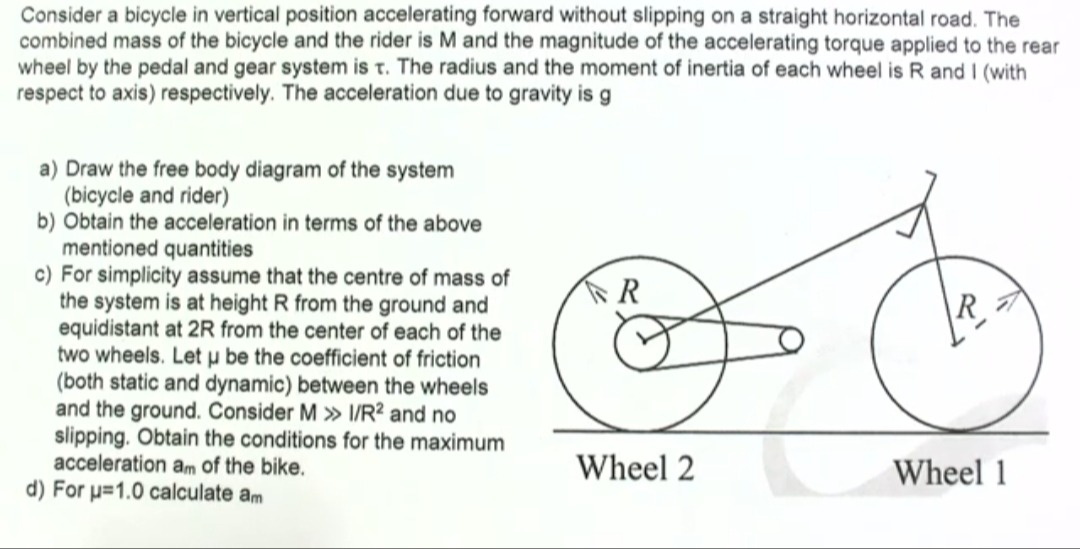Question
Question: Consider a bicycle in vertical position accelerating forward without slipping on a straight horizont...
Consider a bicycle in vertical position accelerating forward without slipping on a straight horizontal road. The combined mass of the bicycle and the rider is M and the magnitude of the accelerating torque applied to the rear wheel by the pedal and gear system is τ. The radius and the moment of inertia of each wheel is R and I (with respect to axis) respectively. The acceleration due to gravity is g
a) Draw the free body diagram of the system (bicycle and rider) b) Obtain the acceleration in terms of the above mentioned quantities c) For simplicity assume that the centre of mass of the system is at height R from the ground and equidistant at 2R from the center of each of the two wheels. Let μ be the coefficient of friction (both static and dynamic) between the wheels and the ground. Consider M >> I/R² and no slipping. Obtain the conditions for the maximum acceleration am of the bike. d) For μ=1.0 calculate am

The solution involves drawing a free-body diagram, applying rotational and translational dynamics, considering friction limits, and calculating the maximum acceleration. Key results include expressions for acceleration and maximum acceleration based on the given parameters.
Solution
The problem requires applying concepts of dynamics, friction, and rotational motion to analyze a bicycle's acceleration.
-
Free Body Diagram: Shows forces like weight, normal forces, and friction at the wheel contacts, along with the applied torque.
-
Acceleration: Derived using rotational equations and translational dynamics, yielding a=MRτ assuming M≫I/R2.
-
Maximum Acceleration: Determined by considering friction limits and weight transfer, resulting in am=4+μ2μg.
-
Numerical Value: For μ=1.0, am≈3.92m/s2.
